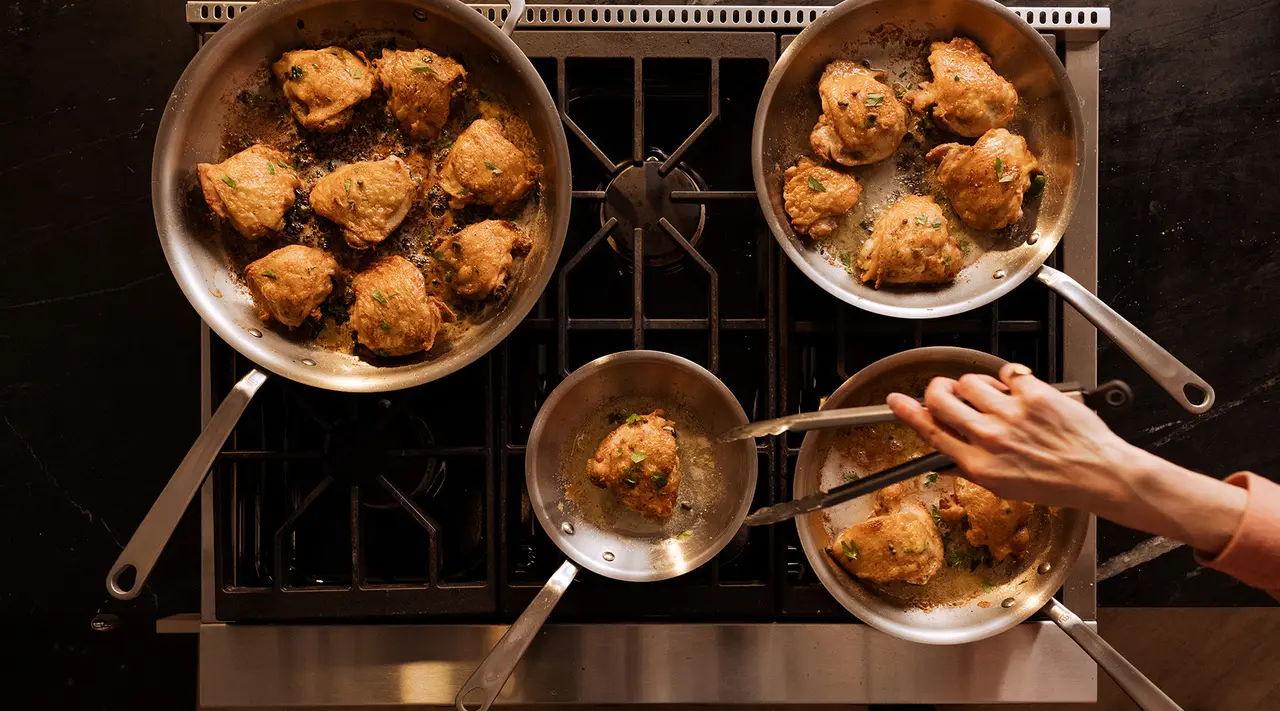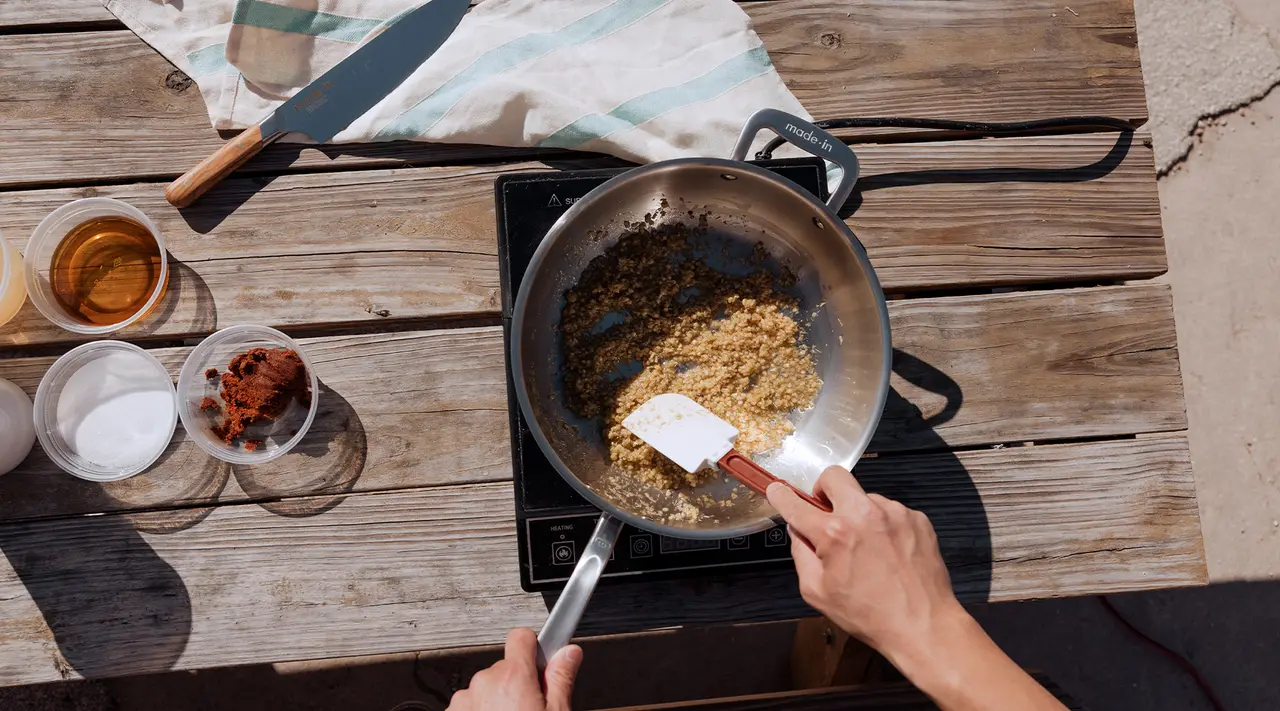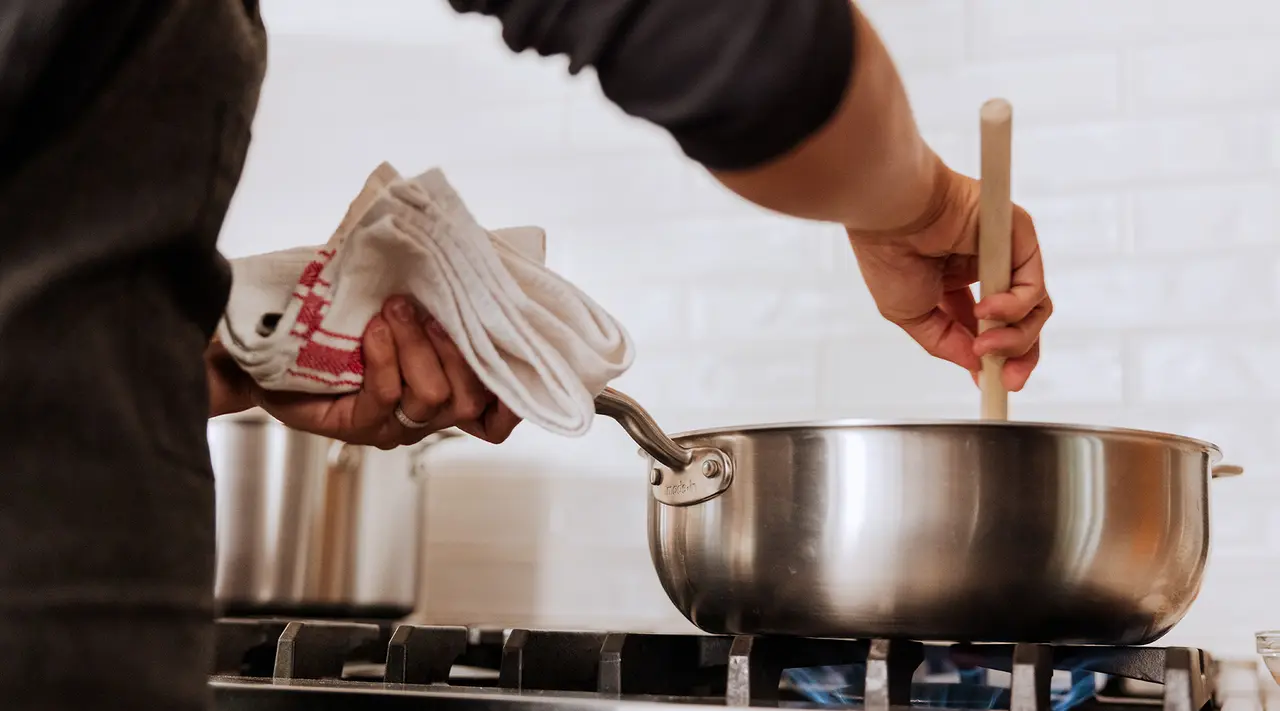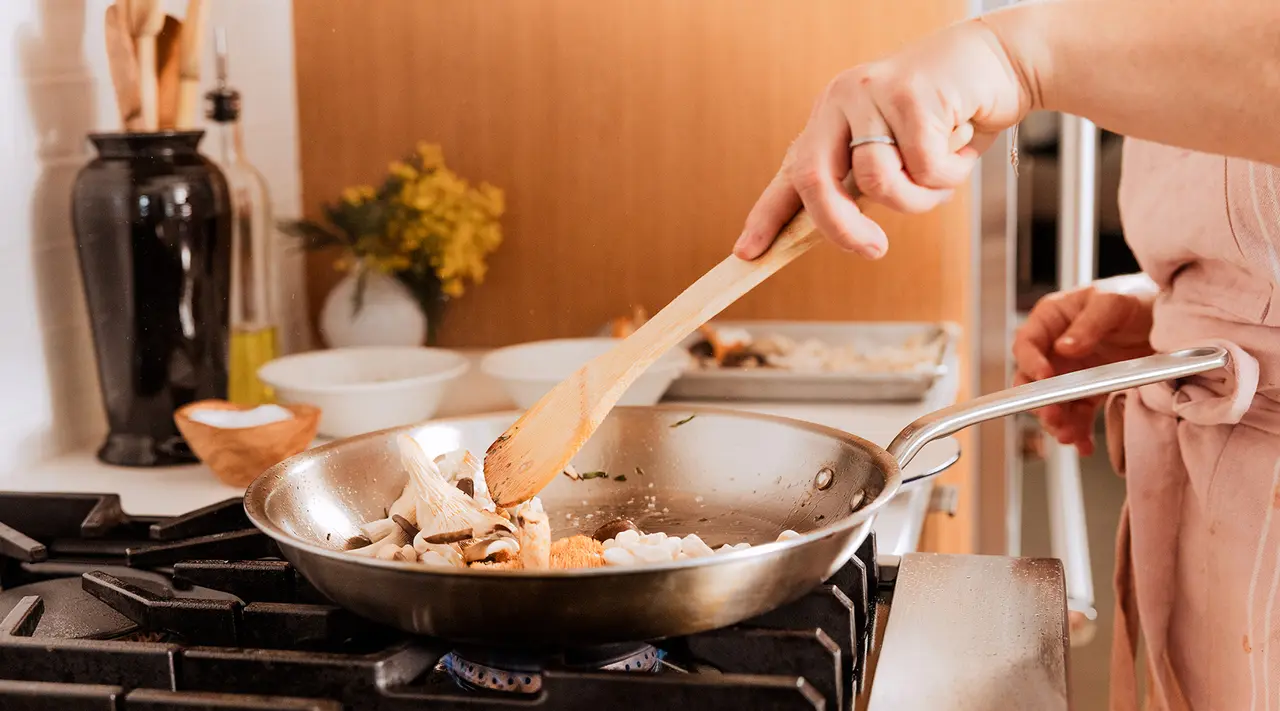Stainless steel is, quite simply, a treat to cook with. This elegant yet incredibly durable metal heats quickly and evenly, offering superb searing ability (especially when it’s cladded with metals like aluminum or copper). It’s also quite resilient: unlike non stick and ceramic, stainless steel’s uncoated, scratch-resistant finish plays well with some of our favorite metal kitchen utensils.
While it may be more durable than its coated counterparts, however, stainless steel isn’t bulletproof. Here’s how to keep your favorite pan protected while you cook.
Why Choosing the Right Utensils Matters

Now, scratching your stainless steel doesn’t always equate to permanent damage. Most scratches you see on the surface of stainless pans are superficial, meaning that they are only on the top layer and likely won’t affect its performance. However, deeper scratches and gouges that go beyond the first layer can trap bacteria, which end up being transferred to your food.
Deeper gouges also shorten your pan’s lifespan and leave your pan more vulnerable to rust and corrosion—plus, this disrupts the smooth, naturally stick-resistant surface of a properly preheated stainless steel pan.
So what tools can you use on stainless steel—and which ones should you avoid? First off, stainless steel tools like a fish turner, spatula, or tongs are perfectly fine, and are rarely abrasive enough to do any damage, just as long as you aren’t sawing into the surface of the pan with your utensils (this may seem intuitive, but trust us—we’ve seen just about every kind of damage you can imagine).
The one thing you should absolutely avoid doing, however, is cutting or shredding your food with a knife while it’s in the pan. A knife blade—even a dull one—can and will leave deep, permanent scratches, so always transfer your food to a cutting board before slicing into it.
Best Utensils for Stainless Steel Cookware

The best utensils to use with stainless steel are gentle enough not to scratch the finish on your pan, but durable and strong enough for all your flipping, stirring, and tossing needs. Ideally, utensils for stainless should be the following:
- Made from non-abrasive materials like silicone, wood, nylon, rubber, and stainless steel.
- Durable and heat-resistant: won’t melt or warp when used on a hot stainless steel pan.
- Ergonomically designed: comfortable, easy to grip, and offset for easier maneuverability (especially necessary for spatulas and fish turners)
Best Types of Utensils for Stainless Steel Cookware
Anything made from silicone, wood, nylon, or stainless steel is a safe bet.
Silicone Utensils
Silicone is a polymer that mimics the look and flexibility of rubber, but with a much higher heat tolerance. Incredibly versatile, it can be molded into a variety of shapes, like the head on our Rubber Spatula and the Spoonula in our Kitchen Utensil Set. As an added bonus, silicone is also dishwasher-safe, as well as highly durable.
Wooden Utensils
Few pieces of kitchenware are as iconic (and versatile, and useful) as the wooden spoon. Wood is tough yet gentle, non-conductive(so it won’t burn your hands, and is overall one of the best tools for stirring and tasting piping-hot soups and stews. Ours is made from Hungarian Beechwood by a father-son duo—in case you needed a romantic story to tell while stirring your latest recipe.
Nylon Utensils
Nylon utensils are rigid, relatively flexible, and gentle enough to use on most cookware surfaces. However, they’re not as heat-resistant as materials like silicone and wood, so make sure not to leave your nylon ladle or spatula in a hot pot or pan unattended. You should also avoid using them for deep frying, grilling, and other high-heat cooking methods.
Stainless Steel Utensils
Stainless steel tools—like other stainless steel cookware and kitchen products—are exceptionally durable and high heat-tolerant, as well as resistant to rust, staining, and corrosion. Stainless steel tools, like the Fish Turner, Ladle, Whisk, and Tongs found in our Kitchen Utensil Set, are sturdy yet flexible—perfect for sliding under burgers, whisking a pan sauce, or turning a fillet.
How to Properly Care for Utensils and Stainless Steel Cookware

In addition to what utensils to use, knowing how to care for stainless steel cookware is just as important as knowing how to cook with it. Here are some of the basic rules:
- Always wash by hand—even if the manufacturer says your pan is dishwasher-safe. This will extend the lifespan of your pan and keep it looking shiny and pristine.
- Wait until your pan is hot/water is boiling before adding salt; this helps avoid pitting.
- Give your pan ample time to cool down before running it under cold water. Sudden temperature change can warp your pan due to thermal shock.
- Make sure to place a Pan Protector, trivet, or other protective layer inside of and/or underneath each pot or pan before stacking, and make sure you’ve thoroughly dried each item before putting it away. You can also hang your pot or pan or place it in a single layer.
Proper maintenance can also keep your utensils in good shape. Always wash wooden and wood-handled utensils by hand, and never leave your utensils to soak or sit without drying. Also, never use pots or pans to store metal utensils or other tools—always store them in a crock or drawer.
Ready to Cook?
Nothing should take away from the pleasure of cooking with stainless steel. A solid set of durable, high heat-resistant utensils—as well as a working knowledge of how to use them—can help you get the most out of your frying pan (or saucier, or saute pan) no matter what you’re cooking.


























